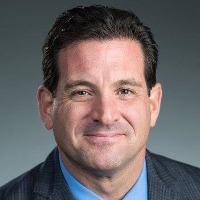Running a CPA firm is a numbers game—but the most important ledger might be your own retirement balance sheet. One eye-opening fact is that a huge portion of many business owners’ wealth is tied up in their companies. One study found that 80% of the average business owner’s net worth is locked into their business. Imagine what that means for your retirement – if your practice isn’t set up to eventually provide for you when you step away, you could be leaving a lot on the table. That’s great while the doors are open, but it can leave a gaping hole in your retirement plan if you wait too long to engineer your exit.
The good news: a handful of strategic moves—tweaking your entity structure, mapping out an ownership transition, and laying down a clear succession plan—can turn that locked‑up equity into the income stream that funds your next chapter. In this article, we’ll show you how each decision point affects both the tax you pay today and the cash you’ll rely on tomorrow, so you can step away on your terms instead of the market’s.
Re-evaluating Your Business Structure for Retirement Readiness
Different business structures come with different rules for taxes and retirement savings. For example, as a sole proprietor or partner, all your business profit is treated as earned income, so you can potentially funnel more of it into tax-advantaged retirement accounts. As an S-corporation owner, however, you split your income into a salary and distributions, and only the salary portion counts as earned income for retirement plan contributions. Any profits you take out as distributions aren’t eligible for retirement contributions.
Beyond annual savings, your choice of entity also affects the tax bite when you eventually sell your practice. For instance, selling the assets of a C-corporation could lead to double taxation (taxed at the corporate level and again when profits are distributed), whereas selling a business structured as an S-corp or LLC (pass-through entity) typically results in a single tax on the gain. These differences can be significant, so it’s wise to review your structure thoroughly in advance if a sale is part of your retirement plan.
Lastly, consider practicality: if you plan to bring in a partner or gradually sell your ownership stake, operating as a partnership or corporation will make the process much smoother than trying to transfer a sole proprietorship. In short, ensure that your business structure aligns with your long-term exit strategy.
Even after you’ve optimized entity choice and payout terms, a handful of less‑traveled maneuvers can shave thousands off your tax bill or smooth the cash‑flow dip that often follows a sale. One is the classic §453 installment sale: instead of taking a giant lump sum (and writing an equally giant check to the IRS), you stretch the proceeds—and the tax—over five to ten years, giving the buyer breathing room while you enjoy a steadier income stream.
If your firm is an S‑corp with healthy cash flow, selling 30 percent or more to an ESOP and rolling the gain into public‑company stock under §1042 can defer capital‑gains tax almost indefinitely; just be ready for the ongoing admin costs and the fact that your firm has to bankroll the ESOP note. At the larger‑deal end of the pool, a tax‑free reorganization under §368 lets you swap your shares for stock in a bigger firm today and postpone tax until you finally unload that new paper—great if you trust the acquiring company’s long‑term prospects and don’t need all the cash up front.
Two more wrinkles can work, but only in very specific circumstances. Qualified Small Business Stock (§1202) can zero‑out up to $10 million of gain on C‑corp shares held more than five years—but “accounting services” are excluded from the definition of a qualified trade, so this is generally off the table unless you own a non‑attest spin‑off under a separate C‑corp umbrella.
Meanwhile, rolling your capital gain into a Qualified Opportunity Fund gives you deferral until December 31, 2026 and a potential tax‑free boost on the new investment after ten years; just know the window is closing fast, the projects are often illiquid real estate, and the fees can sting. Bottom line: each tactic buys you either time, tax savings, or both—so long as you accept the fine print that comes with it.
Checklist: Business Structure and Retirement Planning – Ask yourself:
- ☐ Have I reviewed how my current entity type (sole prop, S-corp, partnership, etc.) affects my personal retirement plan?
- ☐ If I’m an S-corp owner, am I paying myself a reasonable salary that balances current tax savings with future retirement contributions?
- ☐ Do I understand the potential tax consequences if I sell my practice under my current entity structure (e.g. capital gains vs. double taxation)?
- ☐ Will my current structure make it easy to add a co-owner or sell the business when I’m ready to retire?
Planning Ownership Transitions: Passing the Torch (and the Income)
Eventually, every practice owner has to answer the question: How will I exit the business, and what does that mean for my retirement income? Ownership transition is all about how you pass the torch – whether you sell your CPA firm outright, bring in a partner who gradually buys you out, merge with another firm, or even pass the business to a family member or junior colleague. The approach you choose can significantly affect your retirement timeline and finances.
Start planning early: Ideally, begin exploring your exit options 5–7 years before you retire . If you wait until the last minute, you may face a buyer’s market and have to settle for less than you expected for your practice.
In fact, nearly half of solo practitioners plan to sell or merge their firm at retirement, yet only 7% have a plan ready to execute. So, what are your options for transitioning ownership? Here are a few common ways to approach an ownership transition, and how they might impact your retirement:
- Outright sale (external): Usually the most significant payout, sometimes paid over a few years rather than all at once. It offers a clean break, but you may need to invest time in finding the right buyer and managing a sudden influx of cash.
- Internal sale (to an employee or partner): A gradual buyout by someone within your firm. This keeps the business in familiar hands, which is good for both clients and staff. However, you will likely be paid in installments over several years instead of receiving a big lump sum. You might also continue working in a reduced capacity during the transition until you’re fully bought out.
- Merger with another firm: Joining forces with a more prominent firm before you retire. You may get some cash upfront or equity in the combined firm, and your workload can lighten as you approach retirement. This can help retain clients through the transition, though your total payout may depend on how many clients stay on after you step away.
Whichever route you choose, be sure it aligns with your retirement income needs. Decide if you prefer a big upfront payment or smaller payments over time (each has different risks and tax implications). Also, make sure your practice is buyer-ready – keep your financial records clean, client contracts up to date, and processes documented – so you can maximize the value when you hand over the reins.
Checklist: Ownership Transition Planning – Assess your readiness to hand off your practice:
- ☐ Have I identified who might take over or purchase my practice (a specific buyer, partner, or list of prospects)?
- ☐ Do I have a target timeline for when I want to start reducing my ownership or involvement (e.g., “within 5 years” or “by age 65”)?
- ☐ Have I evaluated different exit options (external sale, internal sale, merger) and how each could affect my retirement finances (e.g., lump sum vs. payments, tax outcomes)?
- ☐ Is my practice “buyer ready” – are financials organized, client relationships stable, and operations able to run without me?
Succession Planning: Securing Your Legacy and Your Retirement
Put simply, succession planning is your game plan for who will run your firm when you’re not there and how you’ll derive value from the business you built. It’s not just picking a retirement date; a good plan aligns the business transition with your personal financial needs.
Many owners assume they can simply sell their practice to fund retirement, but it’s not that simple. A succession plan turns that assumption into a concrete strategy. It also outlines key details like when and how you’ll exit, who will take over, and how you’ll get paid for your share of the business.
Be sure to communicate your plans to your team and, when the time comes, to your clients. Keeping clients comfortable with the transition is crucial, especially if your retirement payout depends on them staying on. Have a backup plan in case you have to retire unexpectedly (for example, designate a colleague to handle your clients temporarily). This ensures your firm’s value is protected no matter what.
Only about 2 out of 10 small CPA firm owners have a written succession plan; the rest do not. That means the majority risk scrambling when it’s time to retire or if an unexpected event forces their hand. Having a plan in place greatly increases your chances of a smooth, profitable exit on your terms.
Checklist: Succession Planning – Do you have these bases covered?
- ☐ Do I have a written succession or exit plan that defines my retirement timeline, who will take over my practice, and how I’ll be compensated?
- ☐ Have I included steps to prepare my successor or buyer (training, client introductions) well before my retirement date?
- ☐ Have I created contingency arrangements in case I have to retire earlier than expected (due to health or other issues)?
- ☐ When the time comes, is there a communication plan to inform clients and staff about my transition?
Bringing It All Together: Your Business and Retirement
In summary, the way you structure, transition, and plan your CPA business directly impacts your personal retirement success. By being proactive in these areas, you can turn your practice into a powerful asset for your retirement, instead of leaving things to chance.
And remember, you don’t have to figure it all out yourself. CPA Retirement Solutions specializes in helping CPA firm owners navigate these decisions. We invite you to schedule a personalized retirement consultation with our team to discuss your situation. We can even start with a free Social Security analysis to help you understand your benefits and options.
You’ve worked hard to build your practice – now let’s make sure it provides for you. With the right plan in place, you can retire with confidence and peace of mind.
We’re here to help you every step of the way!










